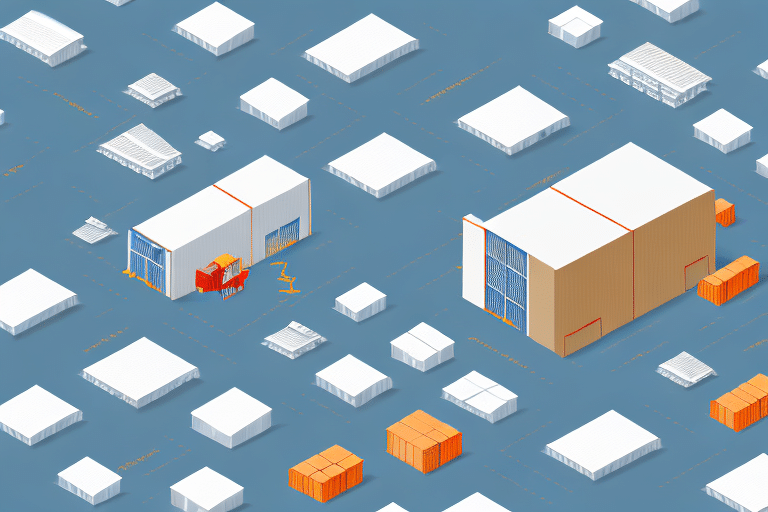Comparing Warehouse Solutions and Fulfillment Center Solutions
Running a successful business requires efficient management of operations across all aspects of production. The two most significant functions where logistics management plays a crucial role are warehousing and fulfillment centers. These two activities are vital in managing inventory, storing goods, and maintaining efficient delivery processes. Both warehouse solutions and fulfillment center solutions offer services that are essential to the success of businesses in different ways. This article explores the differences between the two and highlights the factors businesses need to consider when choosing between them.
Understanding Warehousing and Fulfillment Centers
Warehousing and fulfillment centers are integral components of the supply chain. Warehouses are facilities primarily focused on storing goods for extended periods, acting as a crucial link in the supply chain. They are typically used by manufacturers, wholesalers, and retailers to store large quantities of inventory.
Fulfillment centers, on the other hand, are designed for the temporary storage and final delivery of products to end-customers. They are usually located closer to consumers, enabling quicker deliveries and enhancing customer satisfaction.
Evolution Through Technology
Both warehouses and fulfillment centers have significantly evolved with the introduction of new technologies and automation. Modern facilities utilize automated systems to manage inventory, track shipments, and optimize space usage, leading to increased efficiency and reduced operational costs.
Managing Returns
Handling returns efficiently is another critical aspect. Fulfillment centers, in particular, provide a centralized location for processing returned products, ensuring they are inspected, restocked, or disposed of appropriately.
Key Differences Between Warehousing and Fulfillment Centers
The primary distinction lies in their operational focus. Warehouses emphasize long-term storage, inventory management, and the handling of goods movement. In contrast, fulfillment centers are geared towards rapid order processing and delivery.
Size and Location
Warehouses are generally larger and situated in industrial zones, while fulfillment centers are smaller and strategically located near population centers to facilitate faster shipping.
Automation Levels
Fulfillment centers tend to employ higher levels of automation, including robotics and automated conveyor systems, to speed up order fulfillment. Warehouses may rely more on manual labor for picking and packing tasks.
Inventory Types
Warehouses store a variety of goods, including raw materials and unfinished products. Fulfillment centers, however, typically hold finished products ready for immediate shipment.
Pros and Cons of Warehouse and Fulfillment Center Solutions
Warehousing Solutions
Advantages:
- Cost-effective for long-term storage with bulk rental options.
- Greater flexibility in storage customization, such as climate control and specialized shelving.
- Ample space for business expansion.
Disadvantages:
- Potential for longer shipping times due to distance from end-customers.
- Higher transportation costs associated with longer delivery routes.
Fulfillment Center Solutions
Advantages:
- Shorter lead times with faster delivery options, enhancing customer satisfaction.
- Advanced automation results in quicker order processing.
Disadvantages:
- Higher storage costs compared to traditional warehouses.
- Limited storage space may not suit businesses with large inventories.
Factors to Consider When Choosing Between Warehousing and Fulfillment Centers
Businesses should evaluate the following factors when deciding between warehouse and fulfillment center solutions:
- Business Size: Large inventories may benefit more from warehousing solutions.
- Customer Location: Proximity to customers can influence the choice towards fulfillment centers.
- Type of Inventory: Finished goods vs. raw materials dictate the appropriate storage solution.
- Inventory Volume: High-volume storage needs align with warehouse solutions.
- Budget: Cost considerations based on long-term vs. short-term storage needs.
- Lead Time Requirements: Faster delivery needs may push towards fulfillment centers.
Customization Needs
If your business requires personalized packaging or assembly of multiple products, fulfillment centers may offer the necessary value-added services.
Scalability
Consider whether the solution can scale with your business growth, accommodating increased inventory or order volumes.
Technological Advancements in Warehousing and Fulfillment Centers
Technology plays a pivotal role in modern warehousing and fulfillment operations. Innovations such as cloud-based warehouse management systems (WMS), robotics, automated material handling, and artificial intelligence are transforming the industry.
Inventory Management Systems
Advanced WMS solutions enable real-time inventory tracking, enhancing accuracy and reducing errors. These systems facilitate efficient order management and space optimization.
Automation and Robotics
Automation streamlines repetitive tasks, increases processing speed, and lowers labor costs. Robotics in fulfillment centers can handle picking, packing, and sorting with high precision.
Data Analytics
Data-driven insights from analytics help businesses make informed decisions regarding inventory levels, demand forecasting, and supply chain optimization.
Real-Life Examples and Case Studies
Warehouse Solutions
Walmart: Utilizes expansive warehouse solutions to store and distribute products efficiently on a large scale, leveraging bulk storage to minimize costs.
Zara: Employs a "Just-In-Time" inventory management system in their warehouses, allowing for rapid restocking based on real-time customer demand. This strategy has enabled Zara to maintain a competitive edge in the fast-paced fashion industry.
Fulfillment Center Solutions
Zappos: Leverages a network of fulfillment centers to offer same-day and next-day delivery, enhancing customer satisfaction and loyalty through efficient order processing.
Amazon: Although known for its vast warehousing capabilities, Amazon's fulfillment centers are highly automated and strategically located to ensure rapid delivery, supported by technologies like robotics and AI.
The Future of Warehousing and Fulfillment Centers
The logistics landscape is evolving with emerging trends that are shaping the future of warehousing and fulfillment centers:
Increased Automation and AI Integration
Automation and artificial intelligence will continue to enhance operational efficiencies, reducing manual intervention and increasing accuracy in order fulfillment.
Smaller, Decentralized Fulfillment Centers
The rise of e-commerce demands faster delivery times, leading to the establishment of smaller, decentralized fulfillment centers closer to urban populations.
Green Logistics
Environmental sustainability is becoming a priority, with warehouses and fulfillment centers adopting eco-friendly practices such as energy-efficient lighting, renewable energy sources, and sustainable packaging materials.
Advanced Delivery Methods
Innovations like drone deliveries and autonomous vehicles are set to revolutionize the last-mile delivery process, offering faster and more cost-effective solutions.
Cost Comparison: Warehouse vs. Fulfillment Center Solutions
The cost-effectiveness of warehousing versus fulfillment centers depends on various factors:
- Business Size: Larger businesses with extensive inventories may find warehousing more affordable due to bulk storage discounts.
- Order Volume: High order volumes can justify the investment in fulfillment centers for faster processing and delivery.
- Location: Proximity to customers affects transportation costs and delivery speeds, influencing overall expenses.
- Technology Investment: Fulfillment centers may require higher upfront investments in automation technologies, impacting costs differently compared to traditional warehouses.
Ultimately, businesses must assess their specific needs, budget constraints, and growth projections to determine which solution offers the best return on investment.
Integrating Your E-commerce Business with Warehouse or Fulfillment Center Solutions
Seamless integration is crucial for maximizing the benefits of warehousing or fulfillment center solutions:
Selection Process
Conduct thorough research to identify solutions that align with your business needs, considering factors like scalability, technology compatibility, and service offerings.
System Integration
Integrate your e-commerce platform with the warehouse or fulfillment center’s management systems to ensure real-time inventory updates and efficient order processing.
Staff Training
Provide comprehensive training to your staff to effectively manage the new systems and workflows associated with the chosen solution.
Continuous Monitoring and Feedback
Regularly monitor performance metrics and gather customer feedback to identify areas for improvement and adjust strategies accordingly.
Common Mistakes to Avoid When Implementing Warehouse or Fulfillment Center Solutions
To ensure a successful implementation, businesses should avoid the following pitfalls:
- Insufficient Research: Failing to thoroughly evaluate potential solutions can lead to mismatches between business needs and service capabilities.
- Neglecting Expert Guidance: Not leveraging expertise from logistics professionals can result in inefficient operations and increased costs.
- Overlooking Operational Impact: Ignoring how the new solution affects existing workflows and staff can disrupt business operations.
- Lack of Adaptability: Not preparing for changes in logistics and inventory management can hinder the flexibility needed to respond to market demands.
Expert Tips for Choosing the Right Warehouse or Fulfillment Center Solution
When selecting between warehouse and fulfillment center solutions, consider the following expert recommendations:
- Assess Your Business Needs: Clearly define your storage, inventory, and delivery requirements to identify suitable solutions.
- Compare Multiple Providers: Evaluate different providers based on their service offerings, technology, and cost structures.
- Ensure Scalability: Choose a solution that can grow with your business, accommodating increasing inventory and order volumes.
- Evaluate Technological Capabilities: Opt for solutions that offer advanced technology integrations to enhance efficiency and accuracy.
- Prioritize Customer Support: Select providers that offer robust support and are responsive to your business needs.
In conclusion, warehouse and fulfillment center solutions provide distinct advantages for managing inventory and streamlining logistics operations. By carefully considering your business requirements and leveraging expert insights, you can select the optimal solution to drive your business success.






















